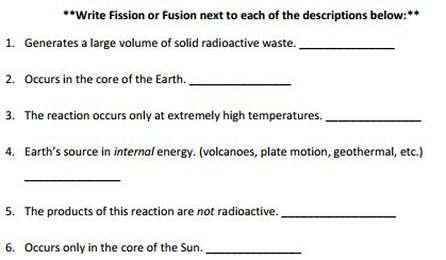

If we can navigate the bottleneck of the next few decades without transforming the climate too radically, the road beyond may be smoother. And solving the problem of climate change is not a one-time affair. As we look further out, though, there are good reasons to think fusion will be a key part of the energy economy in the second half of the century, when more developing countries will start requiring Western-size energy budgets.

“But it's not going to be viable in the next 10 to 20 years, so we need other solutions.”ĭecarbonizing by mid-century will therefore depend on other technologies: renewables such as solar and wind nuclear fission and perhaps carbon-capture techniques. (Observatory columnist Naomi Oreskes also makes this point here.) “I do think fusion looks a lot more plausible now than it did 10 years ago as a future energy source,” says Omar Hurricane, a program leader at Lawrence Livermore National Laboratory, where the NIF is housed. Given that the global temperature rise over the current century may be largely determined by what we do-or fail to do-about carbon emissions before then, fusion can be no savior. Most experts agree that we're unlikely to be able to generate large-scale energy from nuclear fusion before around 2050 (the cautious might add on another decade). The latter question is one of the few in this field to which there is a clear answer.
/artwork-of-nuclear-fusion-reaction-160936093-57f174485f9b586c35490999.jpg)
Will it ever be a significant source of power for our energy-hungry planet-and if so, will it arrive in time to save Earth from meltdown? Physicists have been studying fusion power since the 1950s, but turning it into a practical energy source has remained frustratingly elusive. Nuclear fusion-the merging of light atomic nuclei-has the potential to produce energy with near-zero carbon emissions, without creating the dangerous radioactive waste associated with today's nuclear fission reactors, which split the very heavy nuclei of radioactive elements. The world is increasingly desperate for an abundant source of clean energy that can mitigate the climate crisis created by burning fossil fuels. These fervent reactions reflect the high stakes for fusion. The high-profile announcement elicited a familiar pattern of responses to fusion research: acclaim from boosters of the technology and dismissals from skeptics, who complain that scientists continually promise that fusion is just 20 years away (or 30 or 50, take your pick). It was a global first and a significant step for physics-but very far from enabling practical exploitation of fusion as an energy source. A team at the National Ignition Facility (NIF) in California announced it had extracted more energy from a controlled nuclear fusion reaction than had been used to trigger it. Last December physicists working on fusion claimed a breakthrough.


 0 kommentar(er)
0 kommentar(er)
